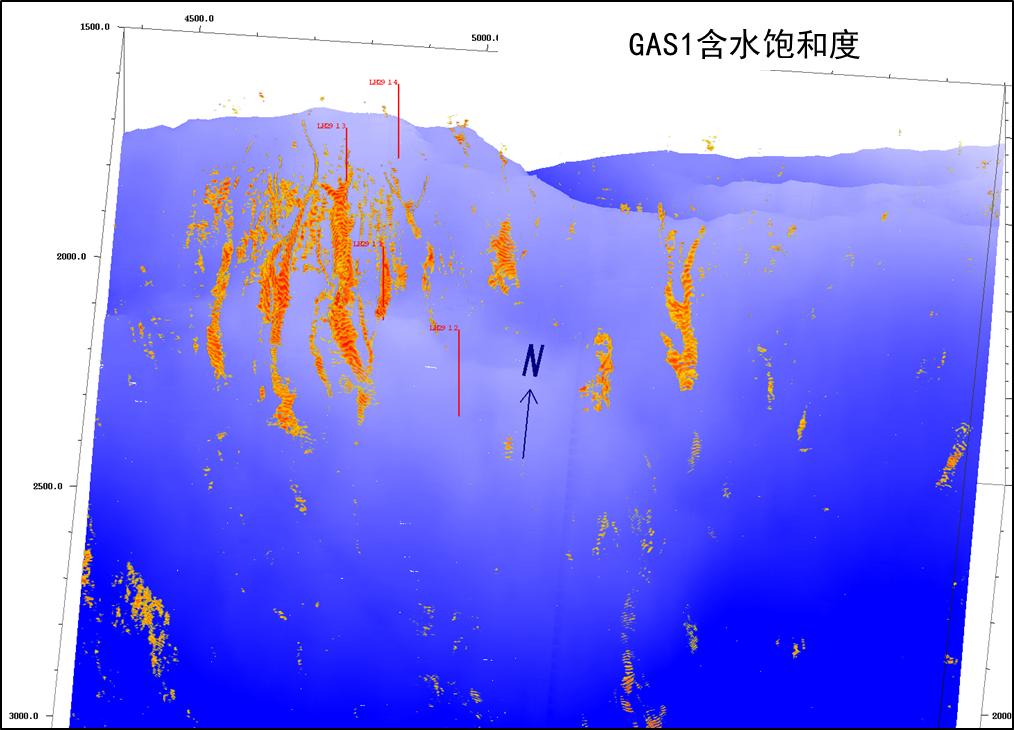Study on petrophysical characteristics and seismic discrimination technology of natural gas reservoir in Baiyun deepwater area
The subject is a scientific research project commissioned by Shenzhen Branch of China National Offshore Oil (China) Co., Ltd., The purpose is to study the distribution of favorable reservoirs in Baiyun deepwater self-operation area and detect its oil and gas bearing potential in view of the particularity of stratigraphic sedimentation in Baiyun deepwater area.
Innovative achievements: quantitative prediction of rock composition
The existing polygonal delineation or PDF probability statistics method is simple and easy to implement, which is quite consistent with mature area. However, in areas with wide range, large variation in burial depth and few wells, the range of rock petrophysical parameters of known wells may not be suitable for the vast undrilled area; The output lithology or lithology probability result cannot reflect the spatial change of reservoir or petroliferous property.
The core of quantitative prediction technology of rock composition based on pre-stack inversion is to analyze the influence of rock composition on rock petrophysical parameters and elastic parameters, and use lithology and petrophysical property measurement chart to separate and predict the rock and pore fluid composition through multiple iterations to achieve accurate prediction goal.
Clastic rock includes rock matrix, pore and filling fluid. The structural component of solid matrix is composed of clastic particles and interstitial materials (miscellaneous base materials and cement), which can be represented as sandy, argillaceous, calcareous, etc. on rock component; The pore fluid is oil, gas and water. Seismic data is the comprehensive response of rock and fluid composition, and pre-stack seismic inversion method can obtain a large amount of petrophysical and elastic parameter information, Including P-wave impedance, S-wave impedance, P-wave velocity, S-wave velocity, density, Poisson's ratio, shear modulus, bulk modulus, Lame coefficient, etc. These parameters have different response sensitivities to fluid, pore and rock components, providing possibility for rock component prediction. The technical process of prediction is shown in the figure below. The key steps include the establishment of quantitative prediction chart of rock composition, correction of influence factors, consistency test with logging interpretation results, prediction of rock composition and other key links.
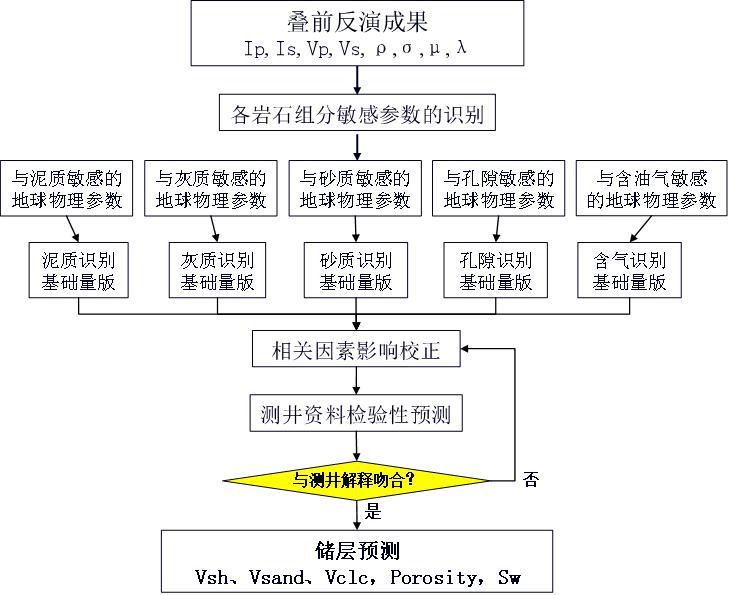
Figure: Technical flow chart of quantitative prediction of rock composition
Based on crossplot analysis of various elastic parameters, select the elastic parameters sensitive to lithology, petrophysical properties, oil and gas properties, establish the prediction chart according to inherent regularity of various elastic parameters. The following figure shows the prediction chart of rock composition in an area in north South China Sea. After the establishment of various charts, whether reliable prediction can be made or not, depends on verification of logging data. The interpretation of elastic parameters of logging curves are consistent with the results of logging interpretation, indicating that the prediction charts are reliable, with high coincidence rate, and can be used for rock component interpretation。 Further, the lateral distribution of reservoir predicted by seismic conforms to the regional geological law, which shows the chart is widely applicable in large areas.

Figure: Prediction chart of rock composition with various elastic parameters
Comparison between predicted results of the chart and log interpretation results: the chart predicted shale and sandstone content of each well in target interval are basically consistent with the log interpretation results, generally with error less than 5%, and few well sections exceed 10%; The calcareous content is relatively consistent, and the porosity prediction error is less than 4%.
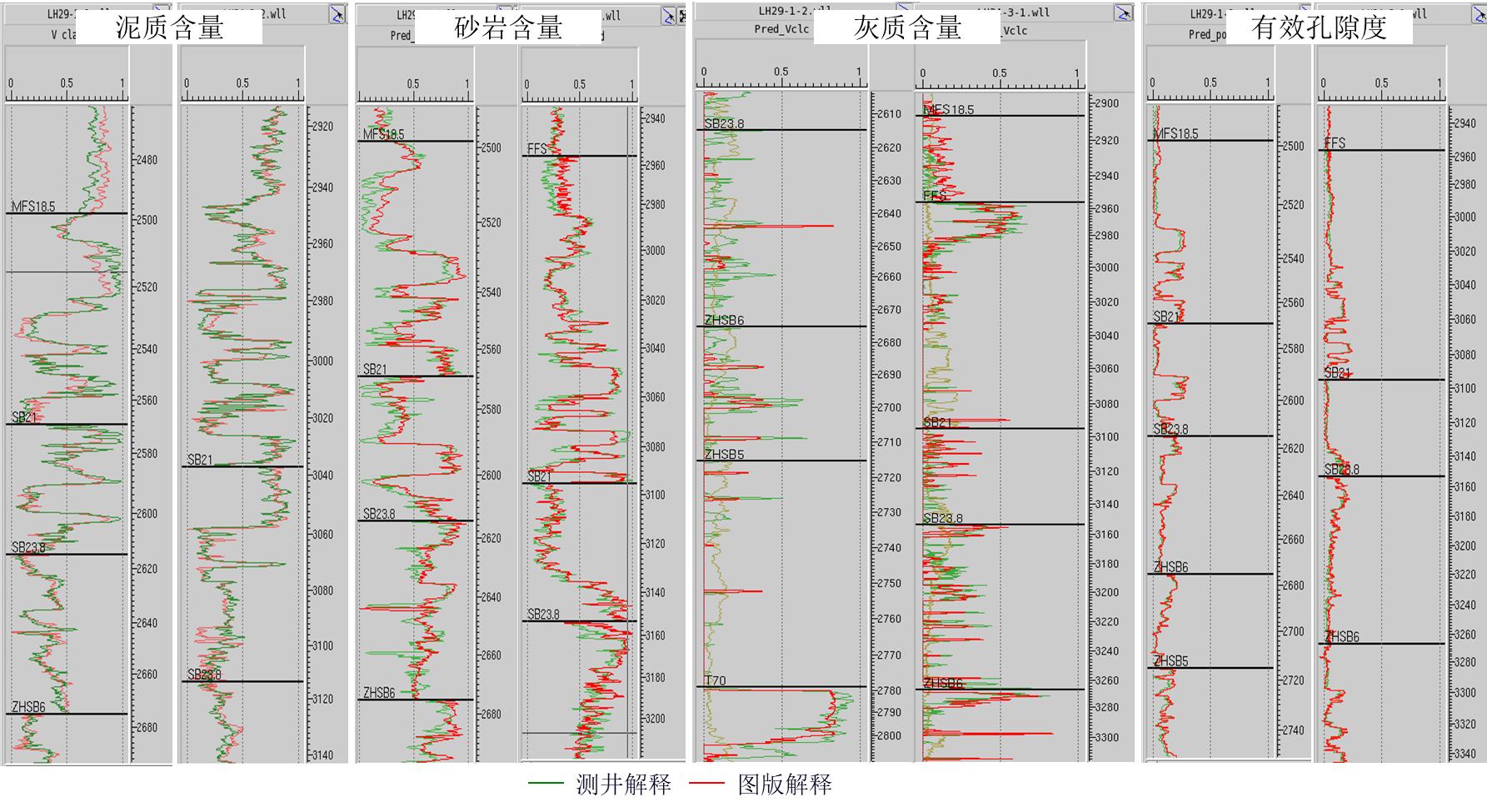
Through rock component prediction chart, the regional rock component quantitative prediction is carried out. The predicted shale content is consistent with logging interpretation, and inter-well change is consistent with seismic response, and the changes are natural.
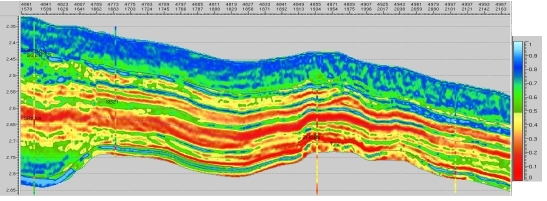
Deep water gravity channelized fan sand body has good distribution regularity and clear channel boundary characteristics.
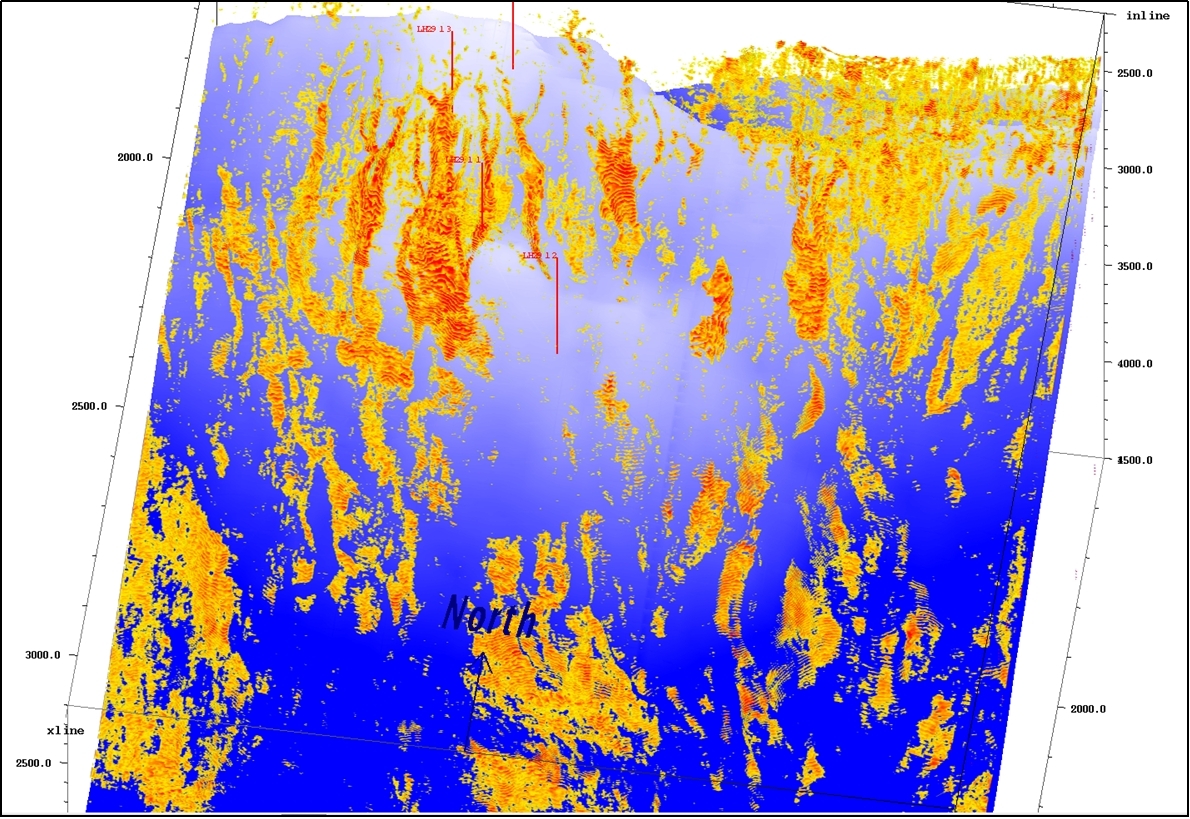
The prediction effect of limestone is good, the prediction accuracy of dense limestone is high, and the source of carbonate clastic material is clear.

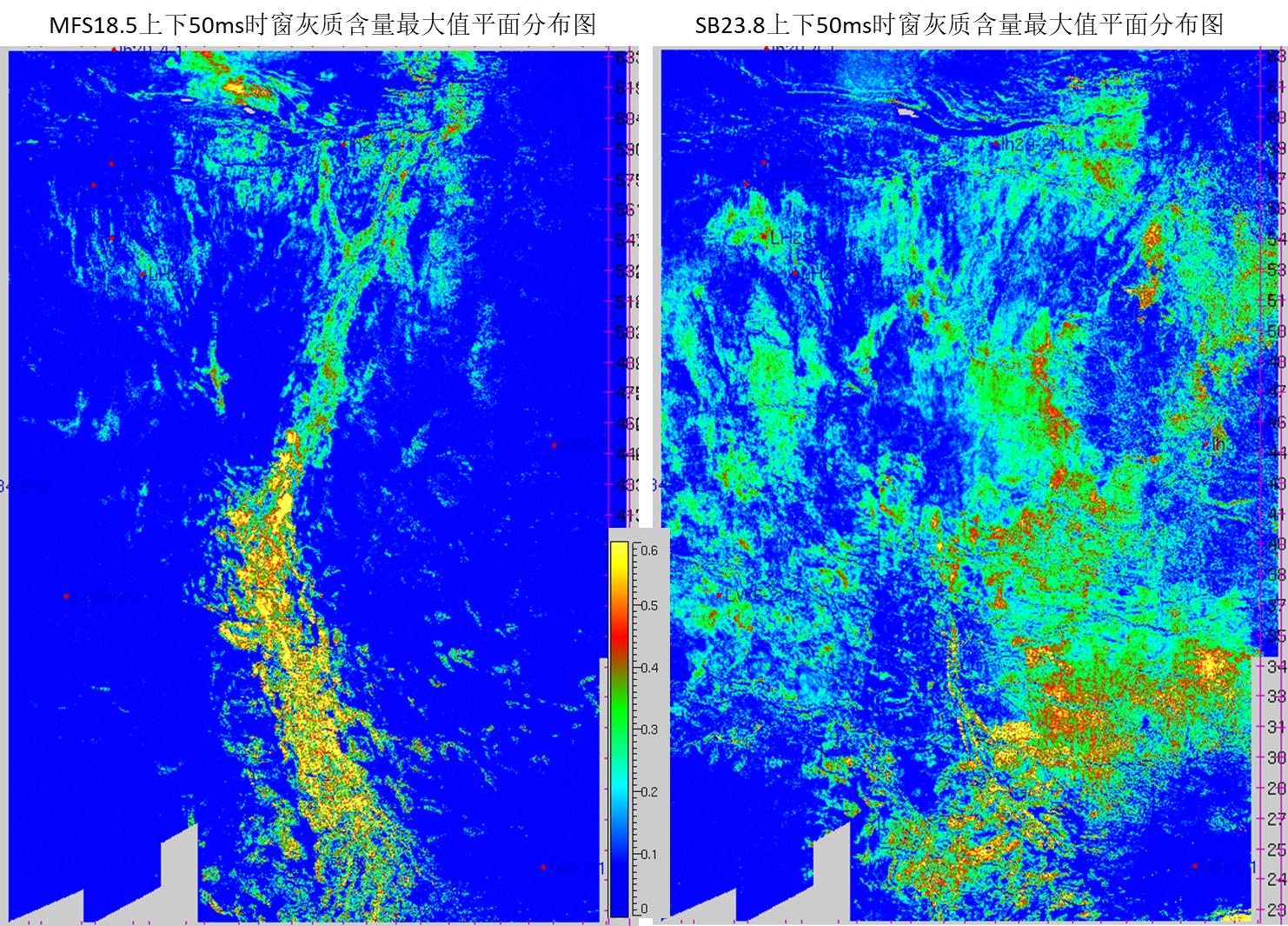
Based on gas detection, water saturation prediction is carried out. Under the condition of good reservoir properties, the predicted water saturation is consistent with log water saturation, and spatial change has good relationship with structure and sedimentation.

